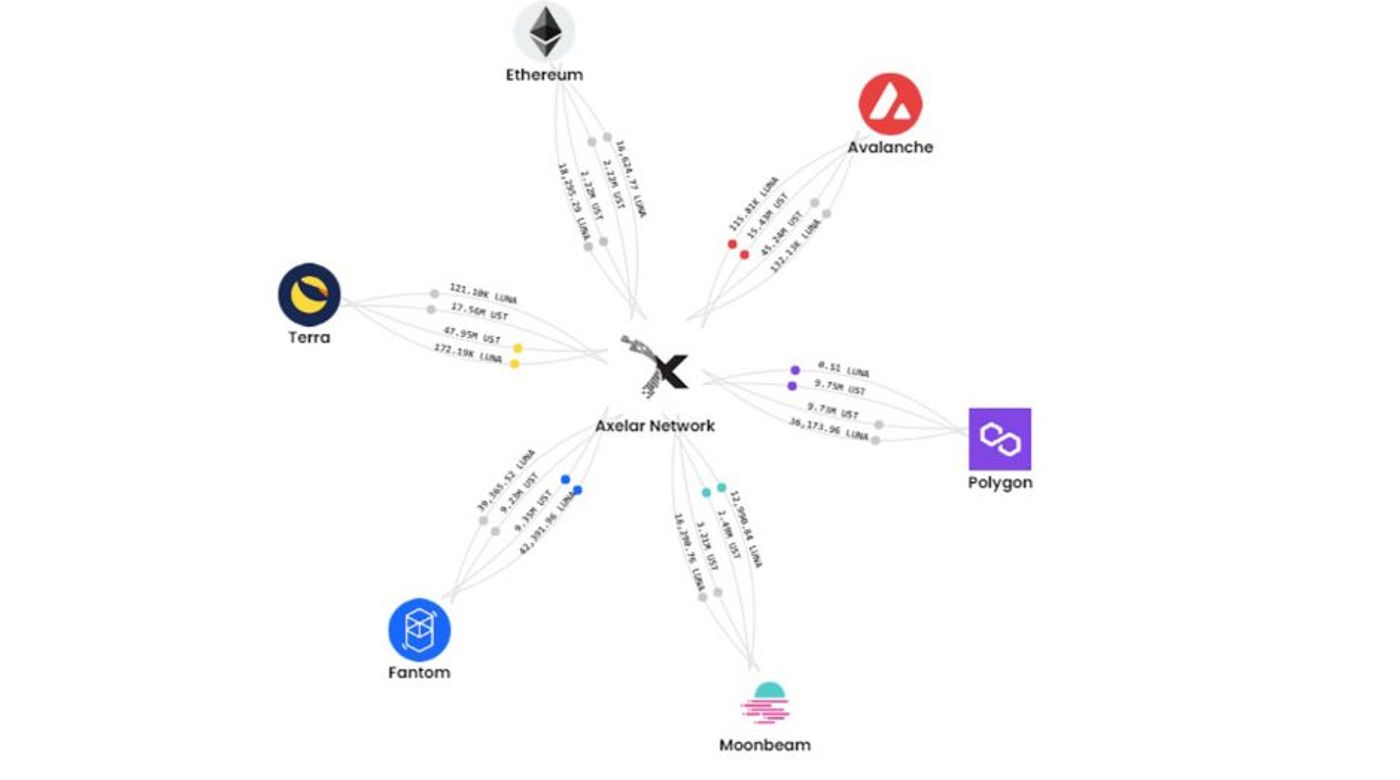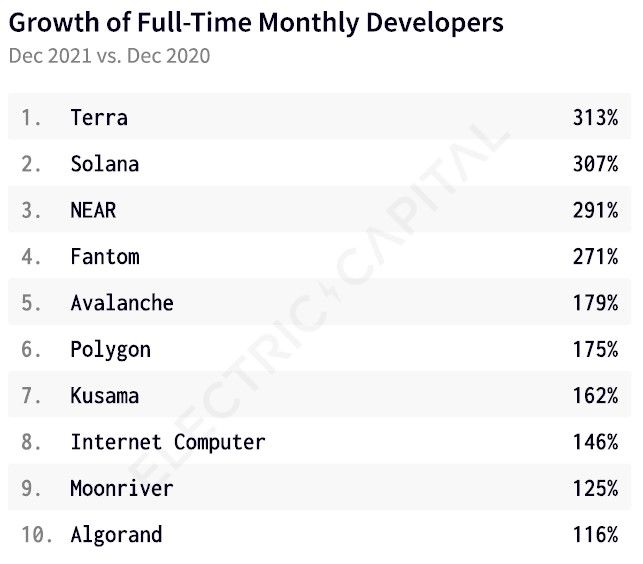In a multichain world, secure connectivity will be critical
From the perspective of both users and developers, traction on alternative L1 infrastructure increased signficantly in 2021. We believe this trend will continue, and our thesis is that different chains with different features will specialize in different use cases, including Ethereum for high-value assets, Solana for gaming, and Tezos for art as examples.

In the multichain world, a critical piece of the development puzzle will be secure communication between blockchain ecosystems. As of today, the bridge systems are still in their infancy, often hiding major security tradeoffs that the average user may not be aware of. We see the current state of these systems as unsustainable and there is a pressing need for more reliable bridge infrastructure, as highlighted by the hack of Poly Network for more than $600 million and the recent Wormhole hack for more than $300 million.
In Web3, we also expect a shift towards native multichain applications, where a user interacts with assets across many chains from the comfort of a single interface. Such applications cannot exist without a trusted inter-blockchain communication channel.
Axelar is the cornerstone for such applications to operate. It connects the currently siloed ecosystems, such as EVM, Cosmos, Polkadot and Solana in the future, in a scalable and secure way. Axelar serves as a highway between blockchains and ultimately will be a one-stop platform abstracting the complexity of inter-blockchain communication into a simple SDK. Axelar is the leading solution based on the combination of:
- system architecture (adding a new chain enables access to all currently supported chains),
- secure design (transactions are generated by threshold signing via consensus of validators), and
- a proven team.
We are pleased to support Axelar’s outstanding team, led by accomplished co-founders Sergey Gorbunov and Georgios Vlachos, both MIT alumni and part of the founding team of Algorand, with one of RBF’s largest single investments so far and one of the largest investments in their latest round.
A multi-chain world
Based on total value locked (TVL) in decentralized finance (DeFi), Ethereum’s market share declined from around 97% in January 2021 to about 60% now. While we anticipate Ethereum will remain a valuable settlement layer for large institutions and high value transactions, we also think there is room for other L1 chains to capitalize on different strengths and specialize in different use cases.

Source: defillama.com
Further, research from Electric Capital shows that the growth during 2021 in the number of full-time developers was highest in the IBC and Solana ecosystems, and the four largest ecosystems in terms of developers are Ethereum, Polkadot, Solana and Cosmos.


Source: Electric Capital
Secure connection is key
Given the growing traction of alternative L1s, a secure highway connecting different blockchain ecosystems is a must-have. Axelar is the first general bridge solution to allow the transfer of assets and messages, serving as a reliable connection between applications regardless of chain, all without compromising on security. Assets are secured by a consensus of currently 30 validators with five second block times, and that will soon increase by one more as the RBF validator is expected to launch soon.
Where do we go from here
Axelar has successfully launched the mainnet on the 22nd of December and added its first bridge application, Satellite, supporting Terra and the major EVM compatible chains from day one, including Ethereum, Avalanche, Polygon, Moonbeam and Fantom on the 26th of January. As soon as the mainnet has been stabilized, Axelar’s modular design will allow developers to add support for new chains in less than three weeks. In the future, Axelar will be a one-stop shop for developing multichain applications as a platform encapsulating inter-blockchain communication into a simple SDK and set of APIs.